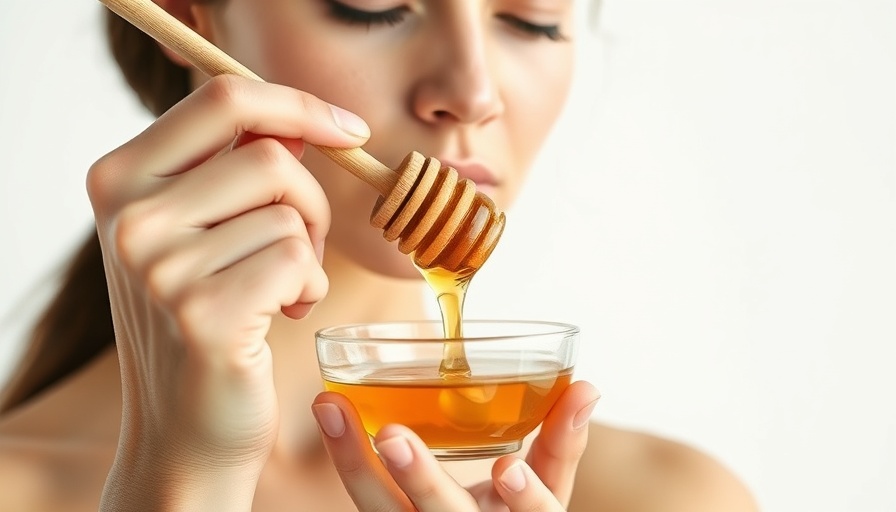
Is Honey the Sweetest Skincare Secret?
Honey has surged in popularity as a favored natural ingredient in skincare routines, beloved for its array of benefits. From hydrating dry skin to alleviating irritation, many swear by its effectiveness. However, before you indulge in honey as a skincare product, it’s crucial to understand its implications for your unique skin type.
Understanding Your Skin Type: The First Step to Glowing Skin
The first rule of thumb in skincare is to know your skin type. Whether oily, dry, sensitive, or a combination, knowing your skin’s characteristics can directly impact how honey preforms on your face. For instance, honey's antibacterial properties are particularly beneficial for oily or acne-prone skin, potentially helping to reduce breakouts. In contrast, those with dry skin may find relief in honey’s moisture-retaining capabilities, leading to soft and supple skin. However, sensitive skin can be tricky; despite honey’s generally soothing properties, it can cause adverse reactions in certain individuals.
The Importance of Patch Testing
One shouldn’t overlook the necessity of conducting a patch test before slathering honey all over the face. Allergies or sensitivities, especially among individuals with pollen allergies or those having experienced skin reactions to bee products, may lead to discomfort. Applying a small dab of honey on a discreet area, like your wrist, allows you to assess your skin’s reaction over 24 hours. If there are any signs of irritation—redness, itchiness, or inflammation—it’s wise to reconsider honey as a part of your skincare routine.
Raw vs. Processed Honey: What You Need to Know
The source and quality of the honey you choose play a significant role in its effectiveness. Raw, unprocessed honey is a powerhouse of medicinal benefits; its natural form retains many healing properties, such as antibacterial and antifungal agents that work wonders on irritated skin. Conversely, most commercial honey gets heavily processed, stripping away these valuable qualities. Therefore, if honey is becoming a staple in your skincare routine, opt for raw or Manuka honey for optimal results.
How to Apply Honey for Maximum Benefits
Preparation is key when applying honey. Start with a clean slate by washing your face to remove any dirt or impurities, which will allow the honey to work more effectively on your skin. Employ a clean applicator for hygiene and distribute a thin layer evenly, steering clear of the sensitive area around your eyes. Depending on your skincare goals, you can leave honey on for different time frames: 10 to 15 minutes for hydration, and up to 20 for acne treatment, while being cautious of any signs of irritation.
Be Mindful of Possible Side Effects
Despite honey’s advantages, potential side effects should not be dismissed. Individuals with sensitive skin can experience reactions despite honey’s natural properties. If this occurs, using raw honey may reduce the risk of adverse effects given its unaltered state. Always listen to your body; discontinue use immediately and consult with a dermatologist if experiencing any strong negative reactions.
The Bottom Line: Honey as a Skincare Ally
Before incorporating honey into your skincare arsenal, it’s essential to understand these vital aspects. A thorough understanding of your skin type, conducting patch tests, and choosing quality raw honey can pave the way for healthier, more radiant skin. If you've been considering honey for skincare, now's the time to dive in carefully and reap its benefits.
 Add Element
Add Element  Add Row
Add Row 



Write A Comment